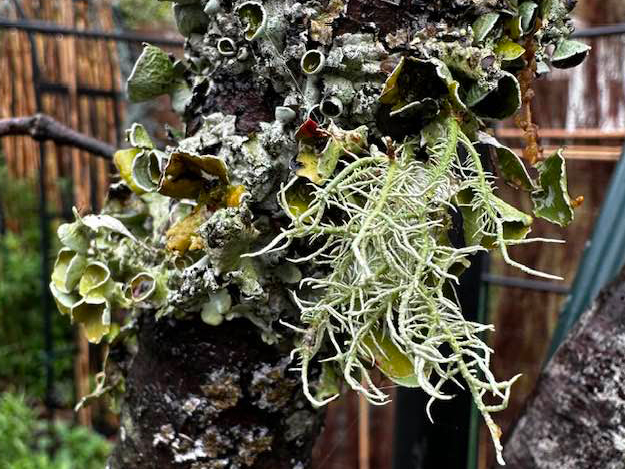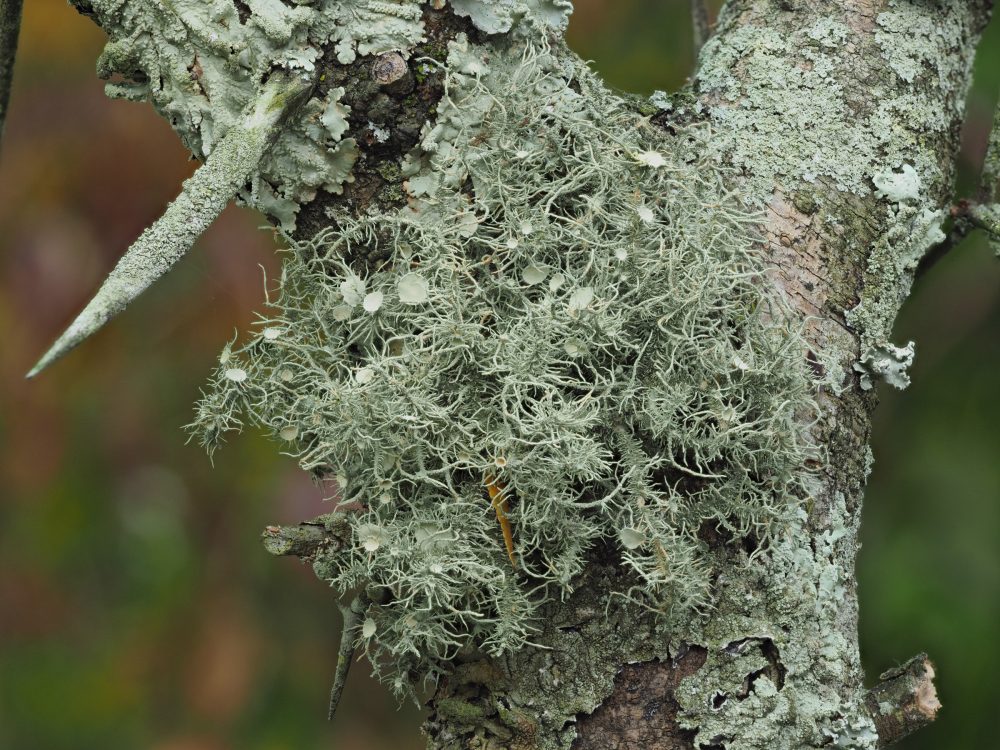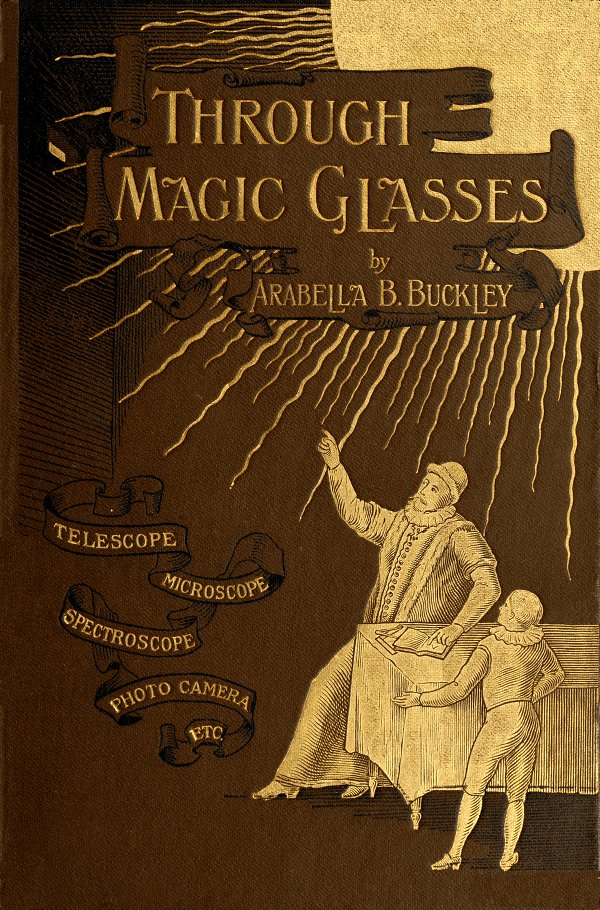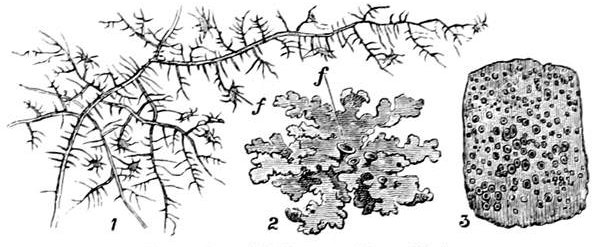
Jacki Kellum – Lichen on a Water Oak Limb
Normally, I am into more traditional gardening, but I am fascinated by a network of lichens that have attached themselves to my neighbor’s water oak tree. Look Closely! I see a smorgasbord of lichens.

Usnea strigosa
Image Credit: Ohio Moss & Lichen Association
“Usnea strigosa, also known as bushy beard lichen, is a fruticose lichen that is commonly found in the eastern United States. It is typically found growing on the high branches of trees, especially those that are dying or unhealthy. It has small, treelike thallus branches, and apothecia that are usually yellow and turn red.” Google Generative ai
“Native Americans used it as a compress to prevent infection and gangrene. Beard lichens have also been used for:
- Dyes: To create orange, yellow, green, blue, and purple textiles
- Cosmetics: To make cosmetics, preservatives, and deodorants
- Fire-starter: As it’s flammable when dry and crisp
- Medicinally: To treat wounds, reduce inflammation, and stimulate wound closure by increasing collagen formation

Twig Lichen
Image Credit: Missouri Department of Conservation

“The autumn has passed away and we are in the midst of winter. In the]\ long winter evenings the stars shine bright and clear, and tempt us to work with the telescope and its helpmates the spectroscope and photographic plates. But at first sight it would seem as though our microscopes would have to stand idle so far at least as plants are concerned, or be used only to examine dried specimens and mounted sections. Yet this is not the fact, as I remembered last week when walking through the bare and leafless wood. A startled pheasant rising with a whirr at the sound of my footsteps among the dead leaves roused me from my thoughts, and as a young rabbit scudded across the path and I watched it disappear among the bushes, I was suddenly struck with the [Pg 76]great mass of plant life flourishing underfoot and overhead.
“Can you guess what plants these were? I do not mean the evergreen pines and firs, nor the few hardy ferns, nor the lovely ivy clothing the trunks of the trees. Such plants as these live and remain green in the winter, but they do not grow. If you wish to find plant life revelling in the cold damp days of winter, fearing neither frost nor snow and welcoming mist and rain, you must go to the mosses, which as autumn passes away begin to cover the wood-paths, to creep over the roots of the trees, to suck up the water in the bogs, and even to clothe dead walls and stones with a soft green carpet. And with the mosses come the lichens, those curious grey and greenish oddities which no one but a botanist would think of classing among plants.
“The wood is full of them now: the hairy lichens hang from the branches of many of the trees, making them look like old greybearded men; the leafy lichens encircle the branches, their pale gray, green, and yellow patches looking as if they were made of crumpled paper cut into wavy plates; and the crusty lichens, scarcely distinguishable from the bark of the trees, cover every available space which the mosses have left free.
“As I looked at these lichens and thought of their curious history I determined that we would study them to-day, and gathered a basketful of specimens (see Fig. 28). But when I had collected these I found I had not the heart to leave the mosses behind. I could not even break off a piece of bark with lichen [Pg 77]upon it without some little moss coming too, especially the small thread-mosses (Bryum) which make a home for themselves in every nook and corner of the branches; while the feather-mosses, hair-mosses, cord-mosses, and many others made such a lovely carpet under my feet that each seemed too beautiful to pass by, and they found their way into my basket, crowned at the top with a large mass of the pale-green Sphagnum, or bog-moss, into which I sank more than ankle-deep as I crossed the bog in the centre of the wood on my way home.” Buckley

]1, A hairy lichen. 2, A leafy lichen. 3, A crustaceous lichen.
f, f, the fruit.